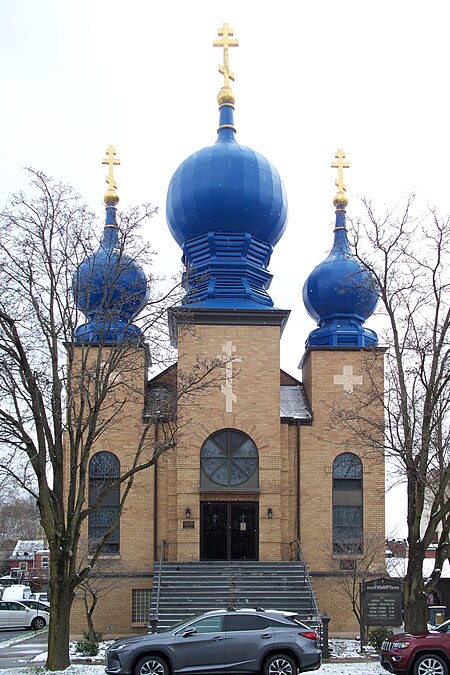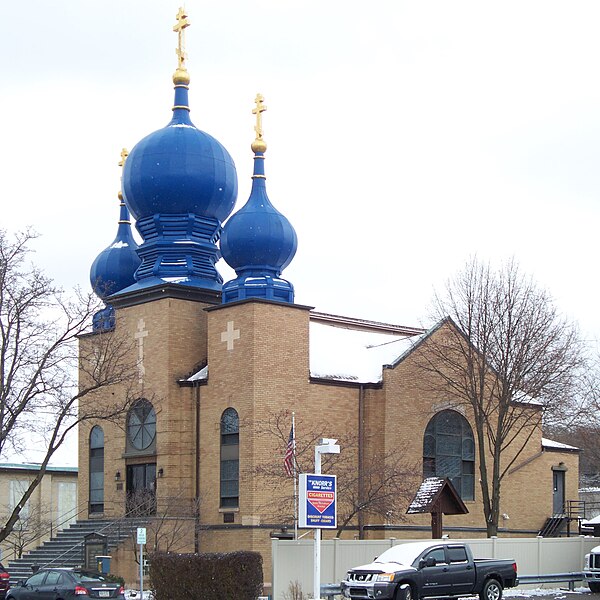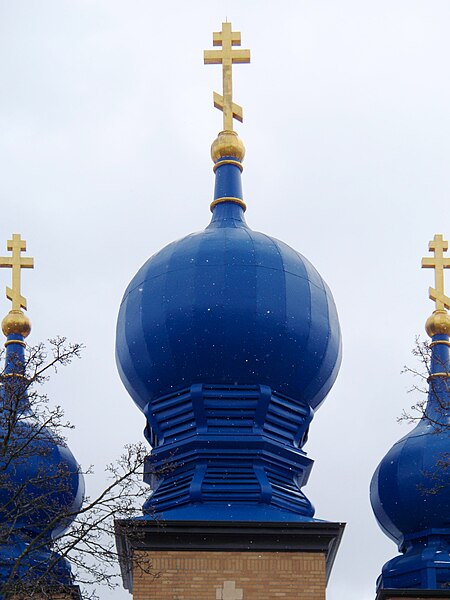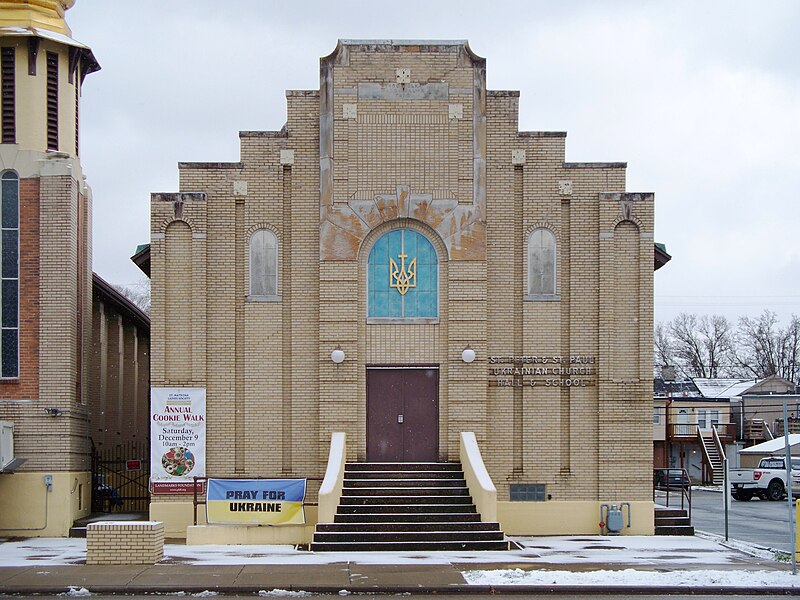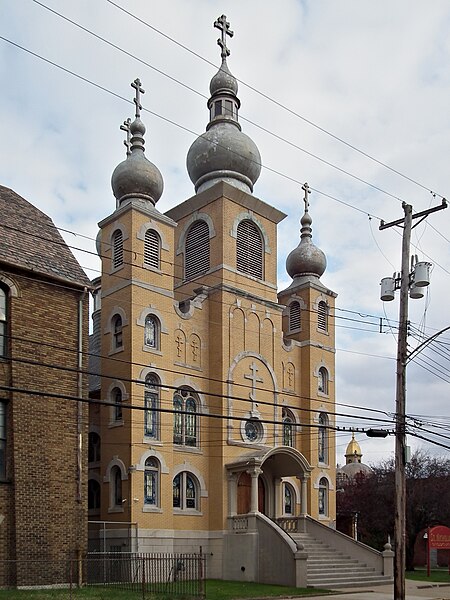
The star-spangled blue dome of this church is an almost startling sight rising above the streets of downtown McKeesport. The church, generally known as “St. Mary’s” by locals, was built in 1974 from a design by Sergei Padukow,1 a specialist in Russian churches who adapted very traditional Russian forms to a late-twentieth-century style.

The serviceable canopy over the side entrance replaced a much more characteristic original, as we see in this 1970s photograph.
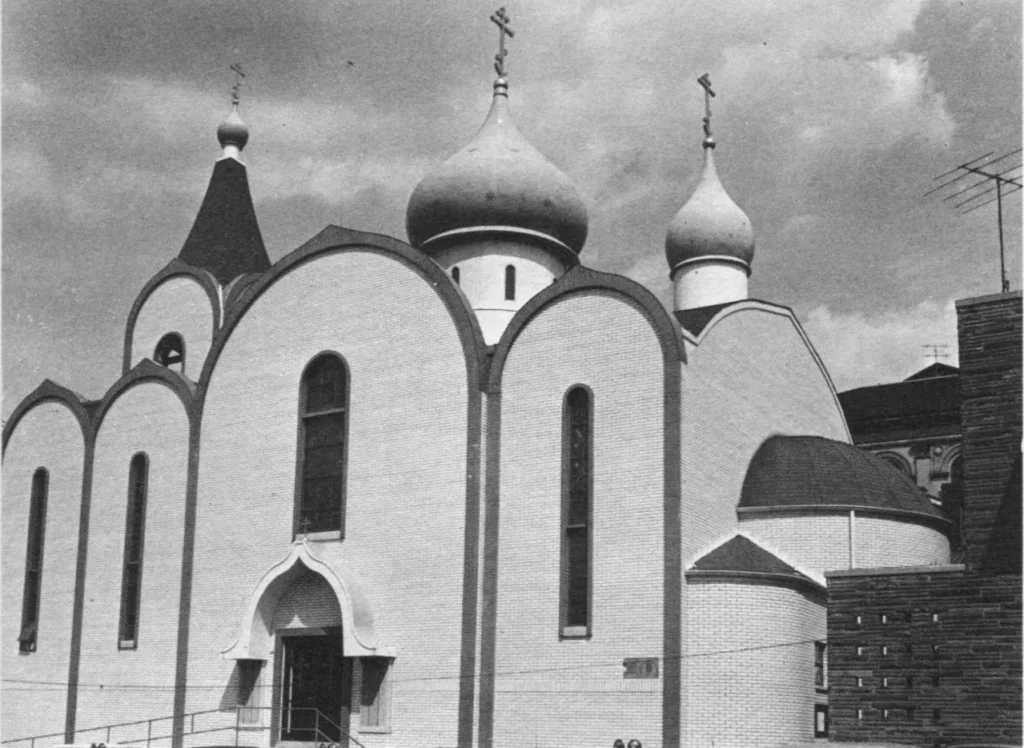
A comparison with this illustration of “a characteristic church” in Moscow (from from John L. Stoddard’s Lectures, 1898) shows us how neatly Padukow adapted traditional Russian forms to a modern idiom.
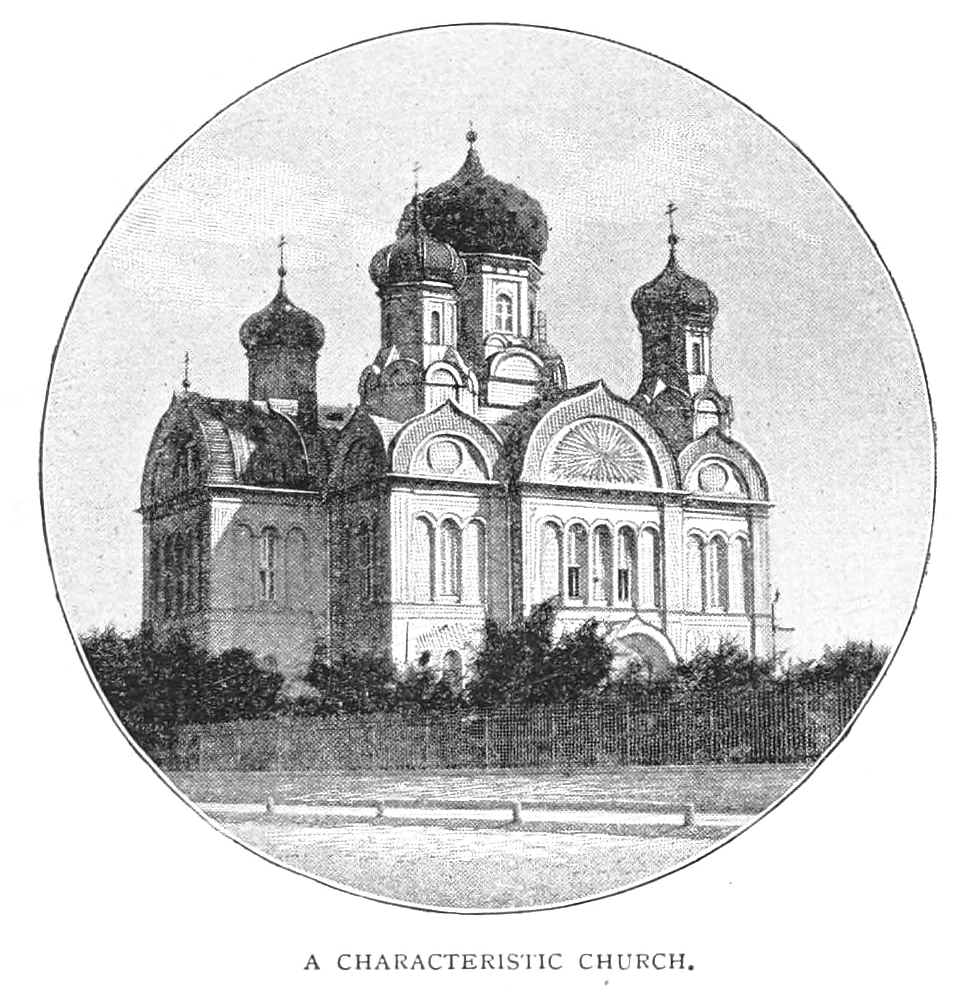




Comments













